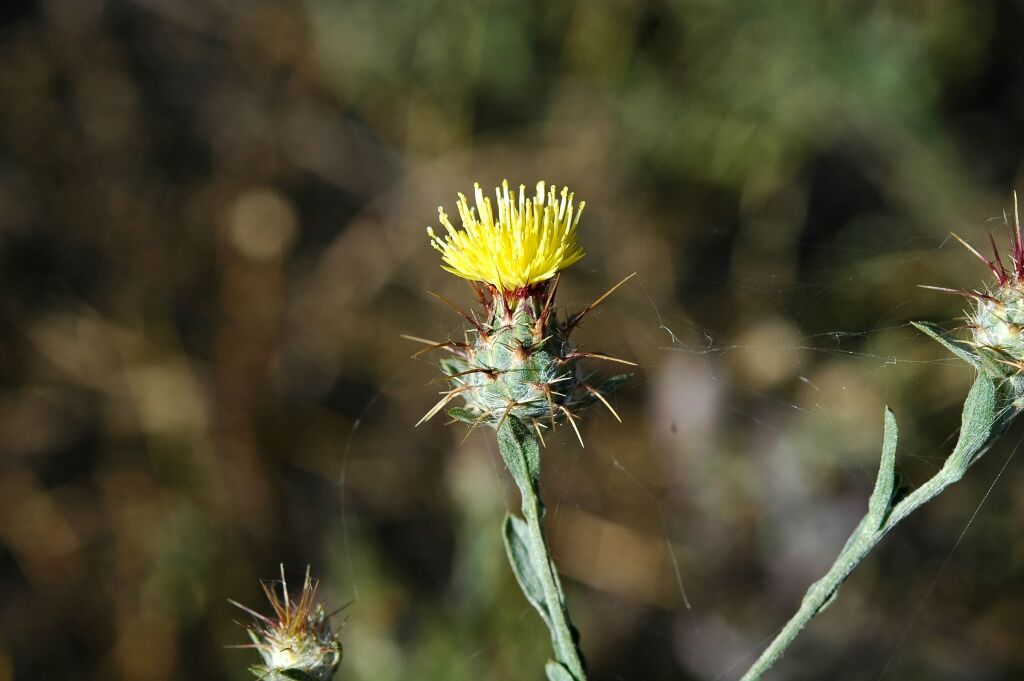Centaurea melitensis
L. Malta ThistleErect annual to 1 m high; stems winged in upper parts. Basal leaves short-lived, petiolate, lanceolate, to 14 cm long and 6 cm wide, pinnatifid, lyrate, pubescent to scabrous; cauline leaves with decurrent bases, lanceolate, 1–7 cm long, 2–9 mm wide, entire or toothed, pubescent with scabrous margins and midrib. Capitula solitary or in groups of 2 or 3, ovoid, 8–12 mm diam.; involucre 9–12 mm long; intermediate bracts lanceolate, cobwebbed, with a terminal appendage of a straight spine 6–9 mm long and 1–3 pairs of smaller lateral spines; inner bracts with a scarious, often spine-tipped apex. Corolla 10–15 mm long, yellow. Cypselas 2–3 mm long, greyish, slightly ribbed, pubescent; pappus of unequal bristles c. 2 mm long, shorter than cypsela. Flowers mainly spring and summer.
LoM, MuM, Wim, GleP, VVP, VRiv, MSB, RobP, MuF, GipP, OtP, WaP, Gold, CVU, GGr, DunT, NIS, EGL, EGU, WPro, HSF, HNF. Also naturalised WA, NT, SA, Qld, NSW, Tas. Native to Europe. A widespread and frequent weed through usually drier parts of State, occurring in rough pasture, roadsides and wasteland.
A collection from Wail in western Victoria is aberrant in having large capitula (c. 15 mm diam., involucres c. 20 mm long), and in this respect approaches the closely related Centaurea eriophora L. which has been recorded in South Australia. However, the cypselas are typical of C. melitensis rather than C. eriphora, which has glabrous cypselas 4–5 mm long.
Jeanes, J.A. (1999). Asteraceae. In: Walsh, N.G.; Entwisle, T.J., Flora of Victoria Vol. 4, Cornaceae to Asteraceae, pp. 652–666. Inkata Press, Melbourne.
 Spinning
Spinning




